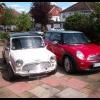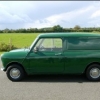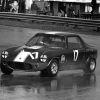In what ways were the series just prior to the A+ engines streets ahead? I was always under the impression the A+ was an improvement e.g. block stiffness, improvements to the crankshaft fillet radii...
I'll agree that the A+ Rods are better than those before and the Cranks too. Like you, when I read up on them in the first instance, I thought they sounded great on paper and have tried loads of them since, but, much as I didn't want to admit to it for a long while, they fall well short. The blocks I find extremely disappointing for all the hype of them. Setting aside the really bad machining from the factory, I'm no metallurgist, however, the grade of cast Iron in them is odd and has a big grain structure, it would appear that following casting (with seeming what was swept up off the floor) they didn't undergo proper post casting heat treatment / stress relieving. No doubt, you would also be aware, that loads of early ones were porous and this only shows up this poor casting methods. The ribbing etc on the block seriously does nothing - next time you have one in bits, have a real good look at where it is and you'll see what I'm saying here. Well, I guess the ribbing does one thing - it makes them quite distinguishable from earlier blocks.
I've found the 1275 blocks made from around 1976 to 1979 way better every time. The cast iron itself machines nicer and gets a much more desirable finish for the job in hand. The factory machining accuracy was better and need much fewer corrections. One would think this would have continued with the A+ and I can't say why it didn't, but every A+ Block I've come across needs loads of machining corrections done.
Even the earliest 1275's were better than the A+ Blocks.
And, coming back to the money that was spent on it - I just cannot see where it was spent, I can see about 1, maybe 2 millions for the R&D, tooling etc, but that's it. The cranks, while better, weren't pioneered by Leyland, the Rods, while an improvement, also weren't 'revolutionary' and the block, well, what did they really do there? The Camshaft Profiles used in most of them were still the same profile dating back to the 60's, though some had revised 'nominal' phasing to the crank but that was only done with the sprockets.
For 35 millions, they could have come up with a completely new, modern (for the era) engine.



















